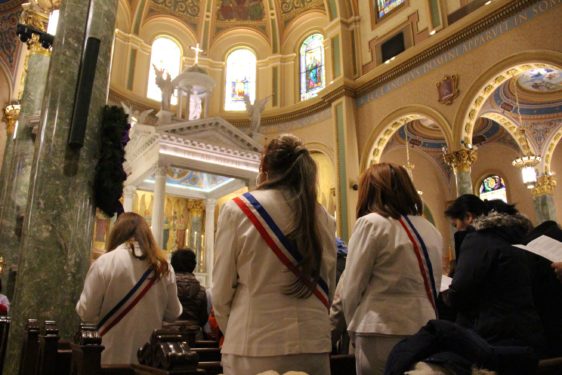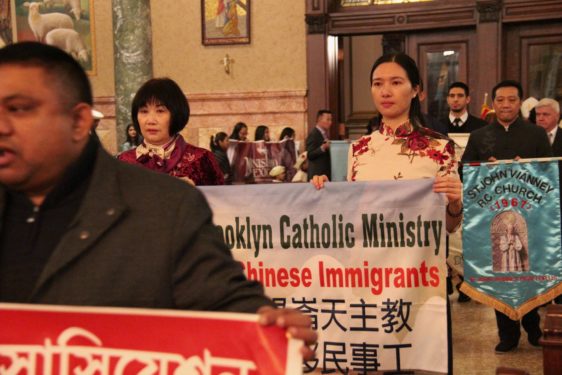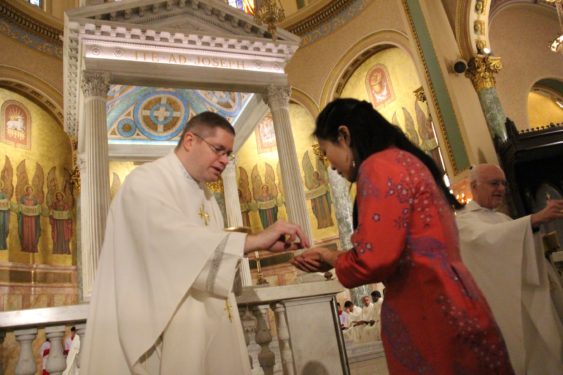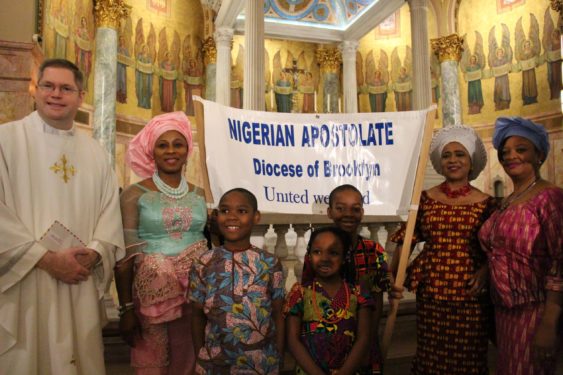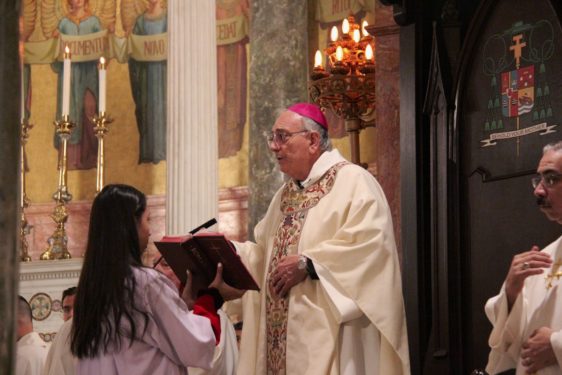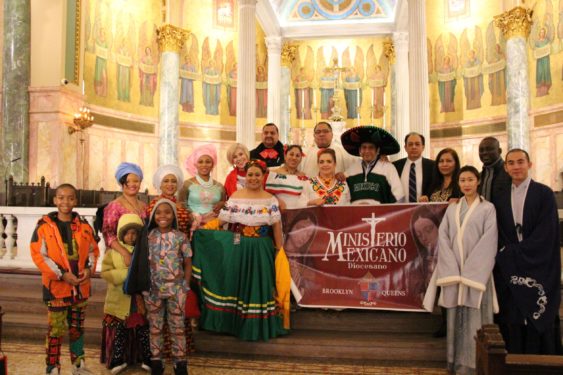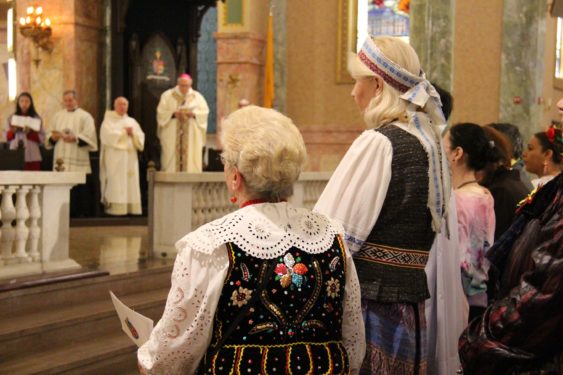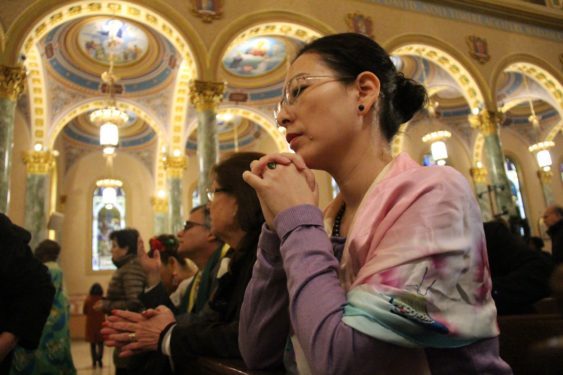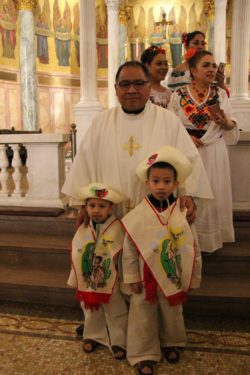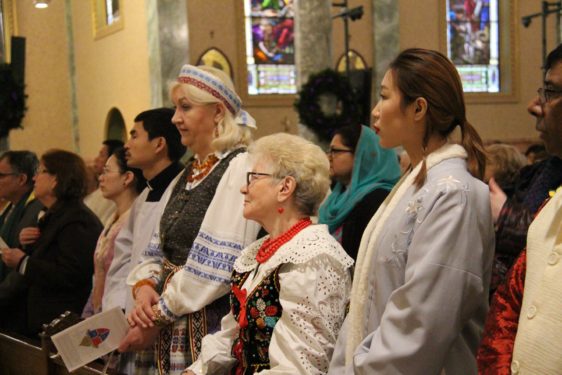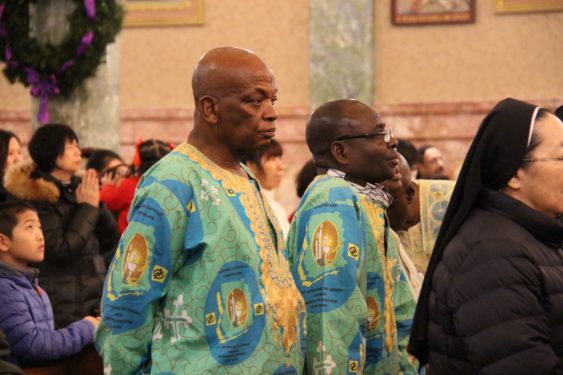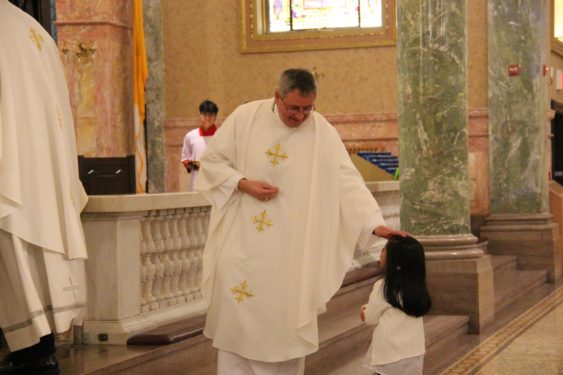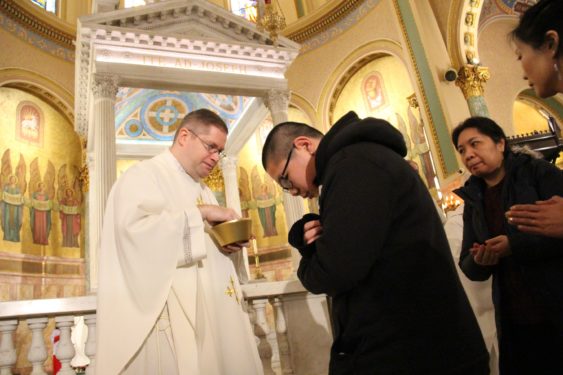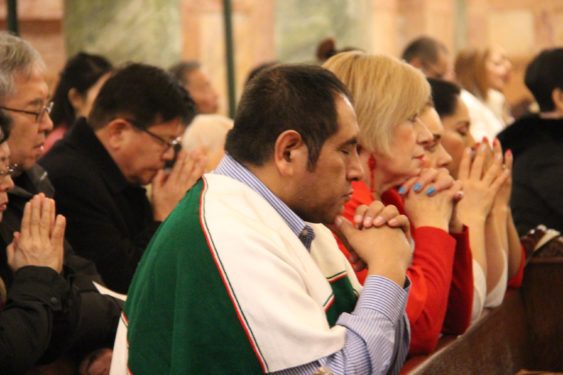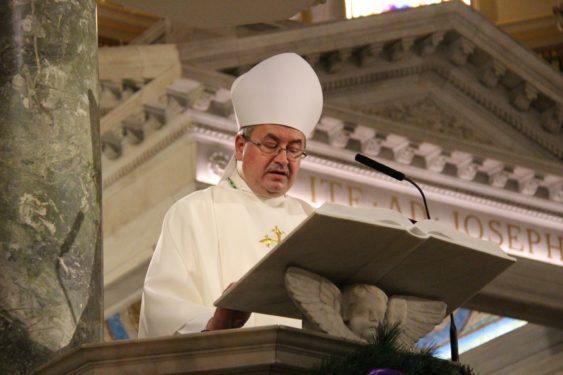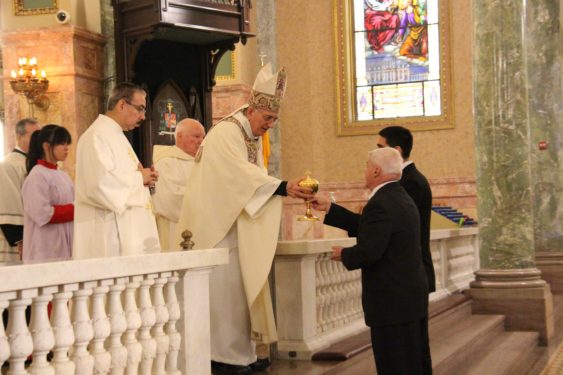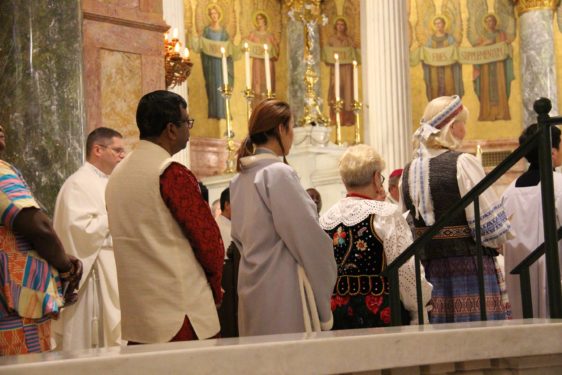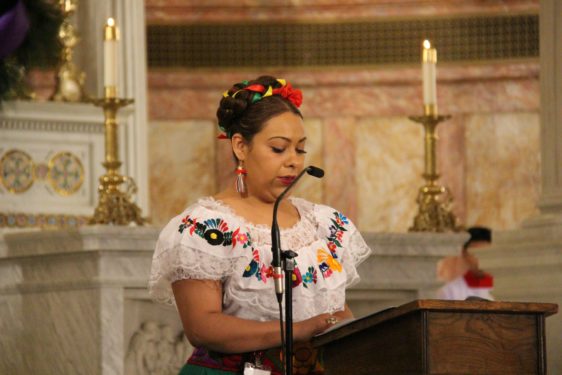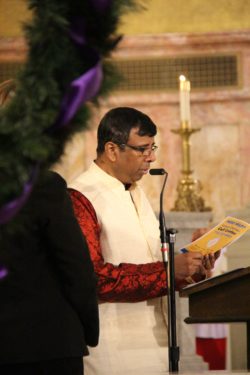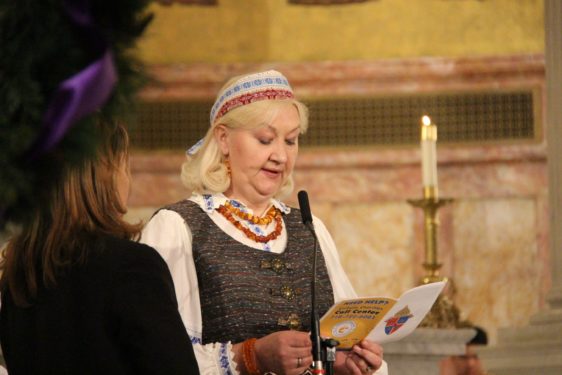PROSPECT HEIGHTS — Dressed in a handmade Guatemalan “corte,” a traditional woven skirt that’s part of Spanish and Mayan culture, Jessica Chamorro came to the annual diocesan Migration Day Mass at St. Joseph Co-Cathedral, Prospect Heights, on Dec. 7 with her mother, Teresa, an immigrant from Guatemala.
“I wear my corte to special events, such as Mass, because it shows the world how beautiful our culture is, and it honors my mom, who came to the States and taught me our traditions,” Chamorro said. She and her mother are parishioners at St. Finbar Catholic Church, Bath Beach.
From colorful Guatemalan cortes skirts to Ghanaian “batakari” smocks, parishioners wearing traditional attire from their native countries filled the pews at the Mass during the first Saturday of Advent.
Bishop Nicholas DiMarzio was the main celebrant, and the concelebrants included Auxiliary Bishops Witold Mroziewski, the diocese’s vicar for migrant and ethnic apostolates, and Raymond Chappetto, as well as at least 50 priests representing different ethnic groups in the Diocese of Brooklyn.
Bishop DiMarzio recognized the increasing ethnic diversity of Brooklyn and Queens, which are home to more than 2 million immigrants — including 37 percent in Brooklyn, and 47.5 percent (over 1 million) of Queens. About 30 apostolates in the diocese minister to the different ethnic groups.
Immigrants in the church are part of the “new Pentecost,” Bishop DiMarzio said.
“They’re part of those who come together in the church from different places, different lands, different languages, different cultures,” he said. “But we have the unity, which is ours through Christ and through the bond of communion and love that binds us together as a church.”
Among the nations represented at the multilingual liturgy were Mexico, Nigeria, Pakistan, the Philippines, Romania, Ukraine and Vietnam. The Word of the Lord was proclaimed in Ukrainian and Tagalog, and the Prayers of the Faithful were read in at least 24 different languages. The diocese’s Guatemalan ministry provided the music.
Bishop DiMarzio offered prayers for migrants and the undocumented and for those far from their homeland, and he reminded the faithful to open their hearts to welcoming the stranger.
In the homily, Bishop Mroziewski said it is the “moral duty” of Christians to help “all victims of throwaway culture,” including the undocumented, “with hearts of compassion and emphasis on respect for their dignity.”
“We are not very different from them. We are a people, one church, one body of Christ,” he said. “It’s our angelic challenge to welcome all who come to our door.”
Father Patrick Keating, Esq., the CEO of Catholic Migration Services, which provides legal and employment services to Brooklyn’s thousands of immigrants, thanked all those who continue to work to uphold the cultural diversity of the Church — from the clergy to those who work on the frontlines.
He said that unity through faith is what the Advent season is all about.
“We remember the birth of one who was an immigrant, who was a refugee, who was forced to flee, but who is our savior Jesus Christ.”
Cornelia Tian and her husband, Li Deng, parishioners at St. John Vianney, Flushing, represented the Chinese apostolate at the Mass.
Wearing a pastel blue “hanfu,” an ancient dress from China, Tian read in her native Mandarin during the prayerful intentions.
“We are an immigrant country, so it is significant to see so many from all over the world all embracing together, worshipping our one God,” she said. “We are all brothers and sisters, children of God.”
Kwame Adusarpong, a parishioner of St. Catherine of Genoa, East Flatbush, who represented the Ghanaian apostolate, wore a bright green batakari smock.
“It gives me comfort and strength, and reminds you that you have not departed from where you come from,” he said. “When we wear our traditional [clothing], when we pray and sing in our language, it shows the beautiful diversity of the church.”

